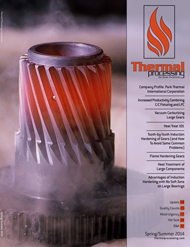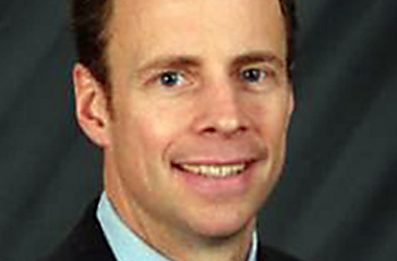Getting the Right Protective and Carburizing Atmosphere
The makeup of a furnace’s atmosphere in the heat treating process varies based upon the application. For carburizing, sensor technology allows for the in-situ monitoring of furnace atmospheres but many assumptions are made when calculating carbon potential based on the prepared atmosphere being used.
Endothermic Atmosphere
Typical endothermic gas generators supply an atmosphere using air and hydrocarbon gas which are mixed and passed over nickel bearing catalyst at about 1900°F. Using methane (CH4) mixed at an air-to-gas ratio of 2.77:1, a properly functioning generator will in theory produce an endothermic gas consisting of 20% carbon monoxide (CO), 40% hydrogen (H2), and 40% nitrogen (N2). Using propane (C3H8) instead of CH4 and an air-to-gas ratio of 7.16:1, the resulting endothermic gas composition will be approximately 24% CO, 32% H2 and 44% N2. The gas is then cooled to maintain the integrity of the gas composition. Correct cooling of the gas is critical to preventing carbon monoxide from reversing into carbon (soot) and CO2. This is the base atmosphere used in the carburizing process; nearly all calculations for the carbon potential are based on the composition of the prepared atmosphere. The need for continuous control of the endothermic generated atmosphere is a major factor driving many industry requirements and customer specifications. The common control parameter on the generator is dew point, which can be monitored using oxygen sensors or dew point analyzers.
A few assumptions must be made when determining carbon potential in the furnace with a supply of endothermic gas. Measuring this atmosphere can be accomplished in a number of ways; the focus of this article involves the use of oxygen sensors, dew point, and infrared measurement. Regardless of the method of measurement, the endothermic gas needs to be continuously monitored and controlled in order to create a consistent controllable atmosphere in the furnace.
Nitrogen Methanol
When using nitrogen methanol in a furnace at the typical operating temperatures, the methanol immediately dissociates into carbon monoxide and hydrogen. When mixed, 33% methanol (CH3OH), 66% nitrogen, and endothermic equivalent atmosphere are formed in the furnace. When using sensors and when the base atmosphere in the furnace is under equilibrium conditions, these assumptions must be consistent, known, and repeatable.
To determine the amount of methanol and nitrogen required, the Total Required Flow (TRF) of gas, which is usually posted on the furnace nameplate, is divided by 1.60. The resulting value is then multiplied by 0.33 to determine the amount of methanol required in standard cubic feet per hour (SCFH). That same value (TRF divided by 1.60) is multiplied by 0.66 to determine the nitrogen required in SCFH.
As with an endothermic atmosphere, the nitrogen methanol system should be delivering a consistent composition to the furnace. Most flow rates for the system are set up to deliver approximately the same mixture of 20% carbon monoxide (CO), 40% hydrogen (H2), and 40% nitrogen (N2).
Carbon Controller Calculation
Dew point, shim stock, NDIR (non-dispersive infrared) analyzers, and carbon sensors have traditionally been used to measure the endothermic atmosphere in a furnace. The carbon sensor actually measures the oxygen content in the furnace, which is why the terms oxygen probe and carbon probe are often used interchangeably. An oxygen probe used in-situ for a furnace application has been the industry standard for years. Because of its durability, reaction time, and continuous measurement, the oxygen probe is the most common method of obtaining measurements.
There are many variations in the way carbon is calculated based on the atmosphere in a furnace. We just defined the two most common practices for a prepared base atmosphere in the previous sections with nitrogen methanol and endothermic gas. These play a significant role when it comes to calculating carbon. In most cases, the atmosphere in a furnace is measured using an in-situ sensor made of zirconia. This zirconia sensor is actually measuring the oxygen. Based on oxygen content and a number of other assumptions, carbon potential can be calculated.
The calculation of carbon using the oxygen probe includes the millivolts produced by the probe based on the partial pressure of oxygen in air versus partial pressure of oxygen in the furnace, the furnace temperature, and a calculation factor referred to as COF (CO Factor), PF (Process Factor), or Gas Factor.
All carbon controllers provide some sort of a calculation factor which can be adjusted and should be based on metallurgical results, shim, coil, or other technologies that are used to measure the carbon-based atmosphere. The purpose of the COF is to restore a repeatable measurement of carbon that is verified using an alternate method.
Other considerations influence the readings; these include sensor condition, furnace condition, part preparation, and part surface area. The most pronounced influence on the calculation is the prepared atmosphere mentioned earlier in this article. Because the CO has the most significant influence on carbon activity, the carbon calculation can be adjusted based on the amount of CO produced by the prepared atmosphere. Using the example of COF (CO Factor), you will find that the carbon calculation increases or decreases based on this setting; in many cases, COF is directly related to the amount of CO produced by the endothermic generator or the nitrogen methanol system (CO values from nitrogen methanol are influenced by furnace temperature, so this also can be a factor).

































